10 Re-Remembering the Alamo
What we've forgotten by not forgetting
mpollak and jgernst
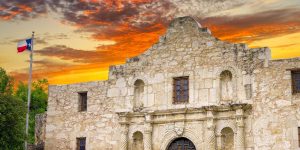
On a busy day, thousands of visitors explore the Alamo, the site of a pivotal 1836 battle in the Texas Revolution where American settlers fought to secede from Mexico and forge a republic that would become part of the United States. The museum features a variety of exhibits and artifacts related to the battle and its participants. Visitors can explore
interactive displays, watch videos, and learn about the history of the battle and its
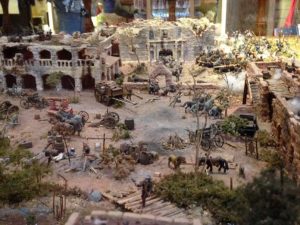
impact on Texas history. The museum also offers educational programs for students and adults alike. Additionally, visitors can take part in special events such as reenactments and living history demonstrations.
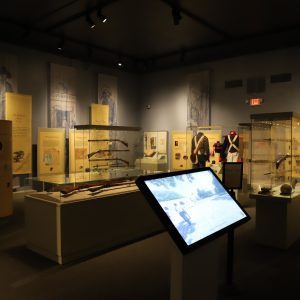
But the site has a more complex history than the 13 day battle in 1836. Over a century before (1718) the Alamo garrisoned Texas secessionists, Spanish missionaries enslaved native people, forcing them to build the Mission San Antonio de Valero where Native Americans were forcefully converted to Christianity. Missionaries buried many of the builders, later converts, and colonists from Mexico and Spain around the mission or right under it over the next century.
The mythologization of the site as a foundational piece of Republican patriotism was initially characterized by conservation attempts dating back to the late 1800’s. Since then, multiple uneventful excavations, the creation of a museum by the Daughters of the Republic to commemorate the battle, and pop culture representations such as The Alamo starring John Wayne as Davy Crocket have shaped and solidified the myth of the Alamo’s place in American cultural and historical memory. Today, massive proposed spending to rework the current day site has prompted heightened discourse about the historical inaccuracies, misrepresentations, and xenophobic cultural impacts that the myth of the Alamo promotes.
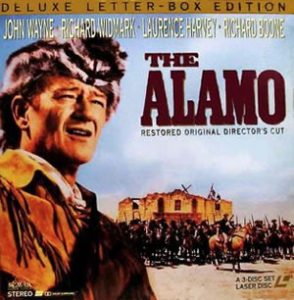
A comprehensive review of archeological excavations at the site in the 1970’s demonstrates that all archaeological work on the site has found very few artifacts pertaining to the Battle of the Alamo. In fact the conclusion of the study stated that there were a wealth of artifacts found from the 1700s and the later half of the 1800s, but there was no stratigraphic layer found that corresponds to the battle of the Alamo. Artifacts that have been found come from indigenous groups, and Spanish traders. There is a rich history in this place, but it has been overlooked for decades in favor of a battle that took thirteen days to complete. Research on the site continues to focus on discovering more Alamo artifacts, despite the fact that the most interesting and significant finds were from other time periods.
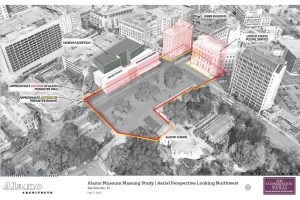 Recently, “The Inter Tribal council of American Indians has affirmed that the remains of more than a thousand individuals, mostly Native American Catholics, are buried in grounds adjacent to the Alamo, in an old cemetery once linked to the Franciscan mission, but of which most of the visible traces have disappeared. The council’s efforts to have the sacredness of the grounds recognized by the state of Texas and the city of San Antonio have met only partial success.”(Trouillot Silencing the Past, 9) Their calls to protect and conserve this burial ground have met their biggest challenge from the Daughters of the Republic of Texas, the group that began the conservation and mythologization of the site in 1905.
Recently, “The Inter Tribal council of American Indians has affirmed that the remains of more than a thousand individuals, mostly Native American Catholics, are buried in grounds adjacent to the Alamo, in an old cemetery once linked to the Franciscan mission, but of which most of the visible traces have disappeared. The council’s efforts to have the sacredness of the grounds recognized by the state of Texas and the city of San Antonio have met only partial success.”(Trouillot Silencing the Past, 9) Their calls to protect and conserve this burial ground have met their biggest challenge from the Daughters of the Republic of Texas, the group that began the conservation and mythologization of the site in 1905.
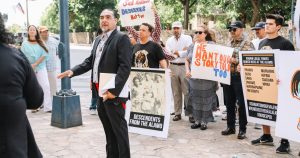
Proposal to Fix:
The Alamo building has become such a cultural icon for that battle, I am not sure that the artifacts that have been found can be separated from the myth of Texas liberation. How do you display the true history of this Spanish mission when the current myth is so strong and meaningful? The ten acre area adjacent to the Alamo must be declared as a gravesite. If that occurs members of the Tap Pilam tribe can gain more agency over remains that continue to be found in that area. Right now when remains are found, a council of five indigenous tribes are contacted, but none of these tribes exist within Texas. The Texas land manager has the powers to grant legal protections for remains found at this site.

In 2026 there is a grand opening plan for the new Alamo museum. Pursuing the official Alamo site, it states that the new museum will focus on telling the whole history of the site instead of just the battle. We remain skeptical of this, but maybe we’ll be proved wrong. We want the museum to acknowledge that members of the indigenous tribes still exist. Over 100,000 descendants of the Tap Pilam tribe are thought to live in Texas. The museum should focus on that aspect instead of framing the tribes as something that no longer exists in any way.
This construction comes at a time of cultural unrest because of the political environment in Texas. Government officials have shown they have no problems banning books or cultural ideologies that do not follow a white perspective. It is essential that any new construction acknowledges and takes responsibility for the cultural erasure and mythologizing that has already occurred at this site.

